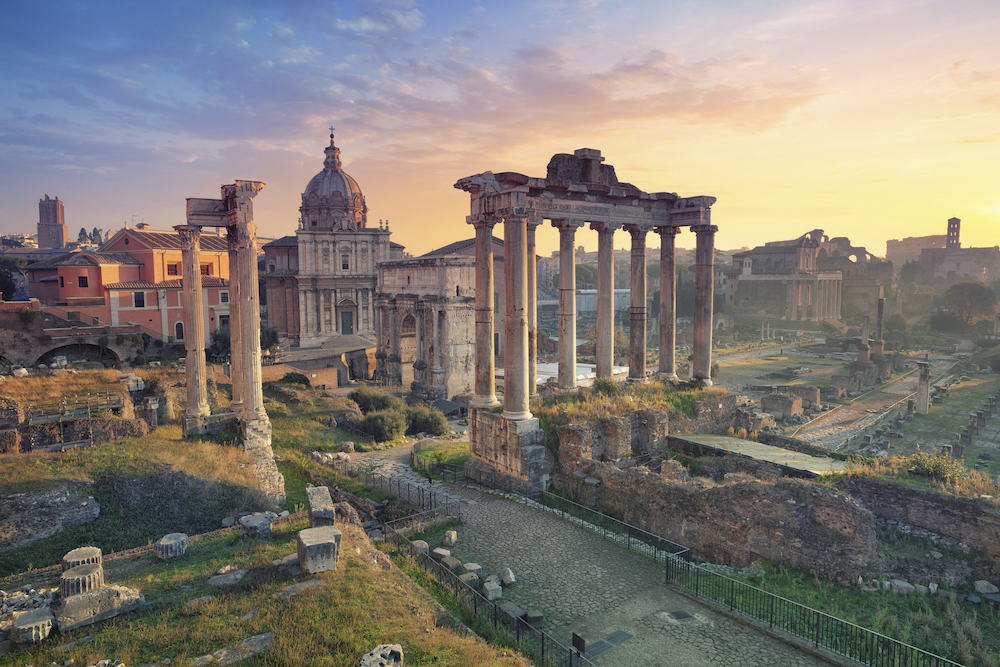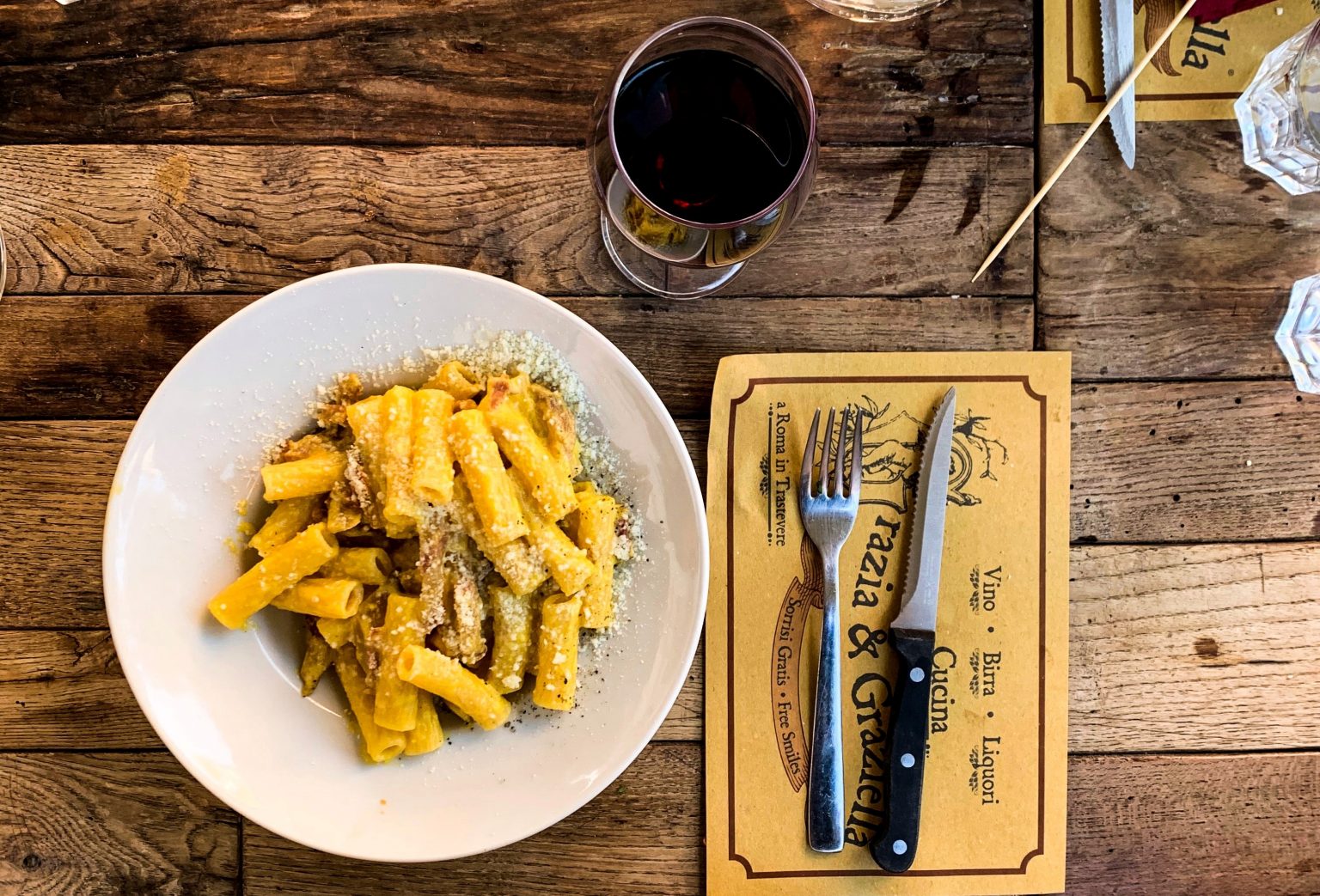The Eternal City is a place where history comes to life at every turn as stunning monuments and impressive ruins tell the story of the city’s illustrious past. One of the most iconic and historically significant sites is the Roman Forum, located right below the Palatine Hill and sandwiched between the Colosseum and the Vittorio Emanuele II Monument connected by the Via dei Fori Imperiali.
This complex was once the center of political, social, and commercial life in ancient Rome. It was in use for over a thousand years, from around 700 BCE to 400 CE. Today, the Roman Forum ruins consist of temples, arches, monuments, and public spaces that provide a glimpse into the life of ancient Romans and the enduring legacy of this once-great civilization.
A brief history of the Roman Forum
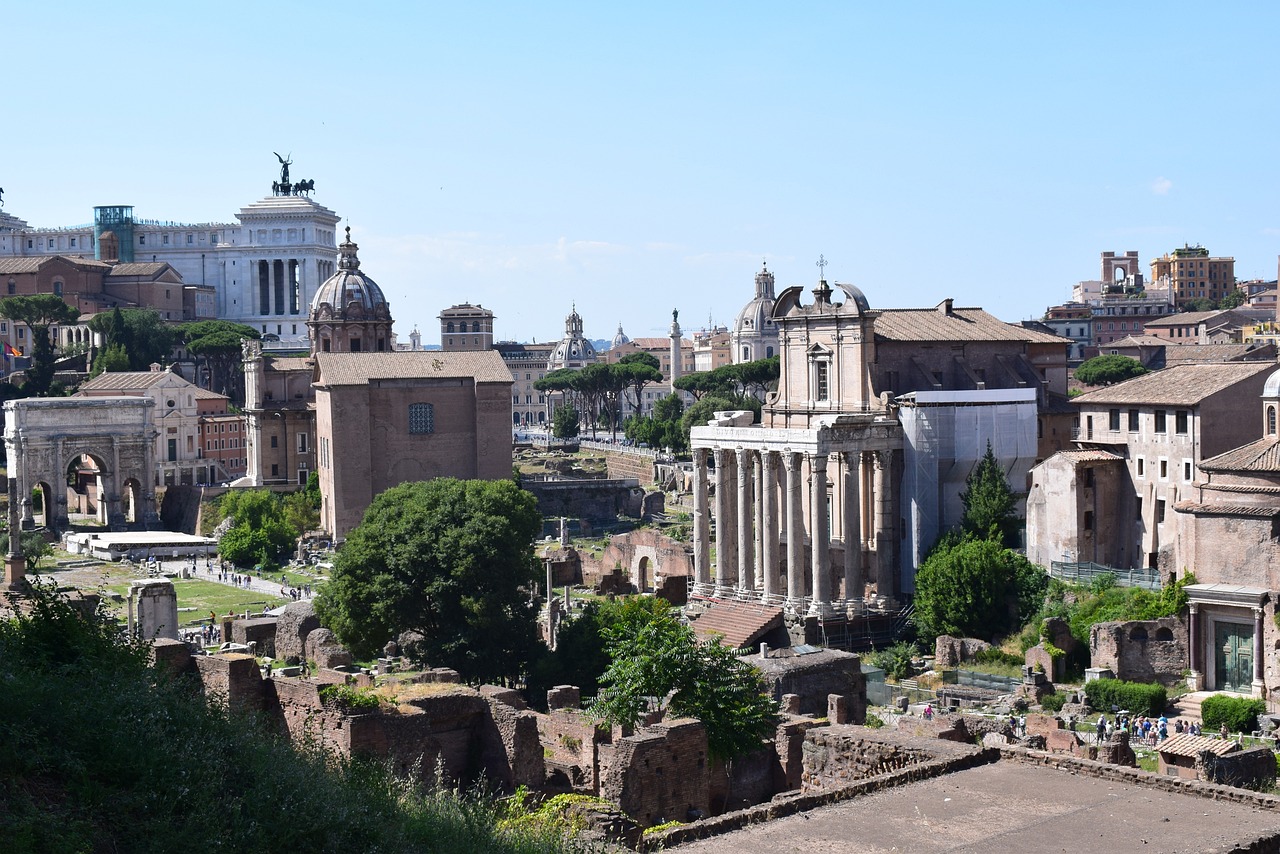
The Forum was originally a marshy valley, but the area was eventually paved, and for centuries it was a bustling hub of activity.
The very first structures were built in the 7th century BCE. Around the year 500 BCE, the area really started booming. Major expansions started and continued until 300 CE. (That’s 800 years in case you weren’t counting.)
As the Roman Empire began to fall, so did the upkeep of the Forum. By 400 CE, most of the ancient buildings were destroyed.
That brings us to the Middle Ages. By then, it had become a pasture for cattle and was largely forgotten. It was only in the 18th and 19th centuries that scholars began to excavate and study the site, uncovering its many layers of history.Fun fact: Archeological discoveries at the Roman Forum still happen today. There was one as recent as 2020 — an underground temple believed to date back to the 6th century BCE.
Visiting the Roman Forum
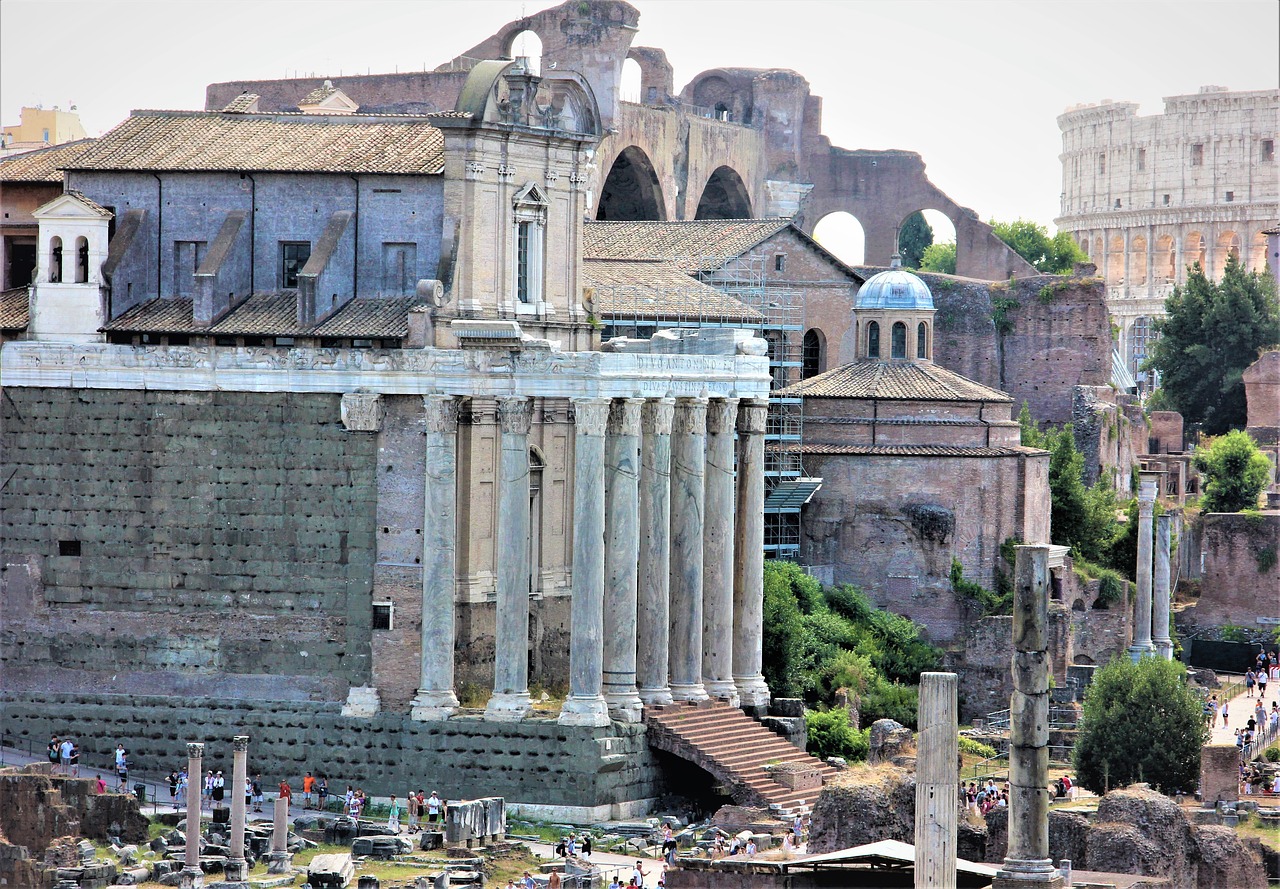
One of the things that makes the Roman Forum so special is being able to walk the same streets the average, ancient Roman citizen walked — imagining their daily lives of going to the market, attending a political speech, meeting friends, or just living life.
When I’m there, I find it so interesting to think that our lives today are very similar to those of the ancient Romans — even 2,000 years later.
Planning to visit the Roman Forum? Here are some of the highlights that should be on your list of must-sees of this remarkable site.
1. Temple of Julius Caesar
A visit to the Forum would never be complete without paying your respects to the ultimate ruler of Rome, Julius Caesar. This temple was built to honor the spot where his body was cremated. To this day, flowers and cards are left at this site.
2. Column of Phocas
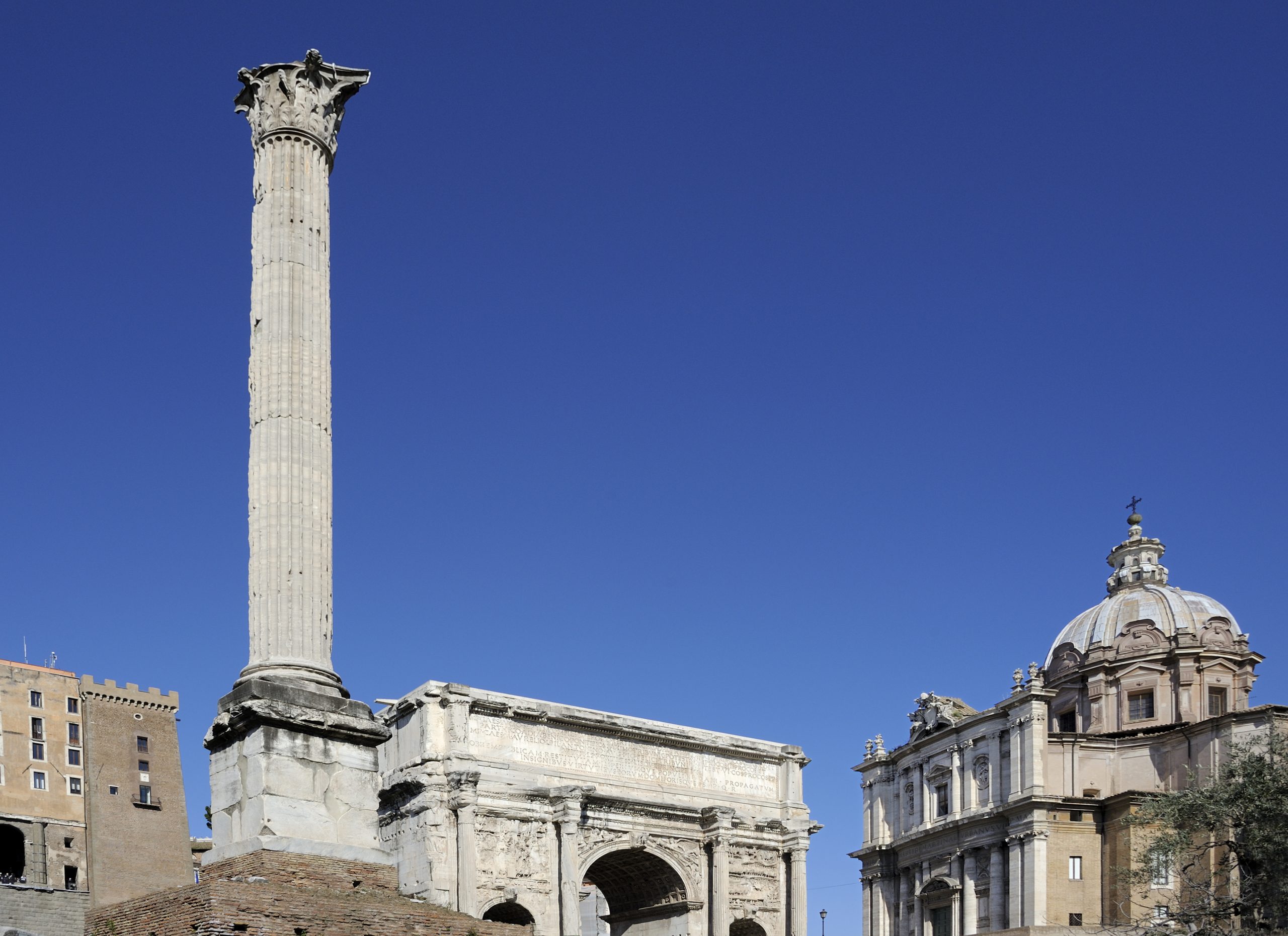
This Corinthian-style pillar was named after the Byzantine emperor Phocas and was erected around 608 CE. It was the last honorary monument built in the Roman Forum. It towers at 44 feet (13.5 meters) tall and is made of white marble.
3. The Arch of Titus
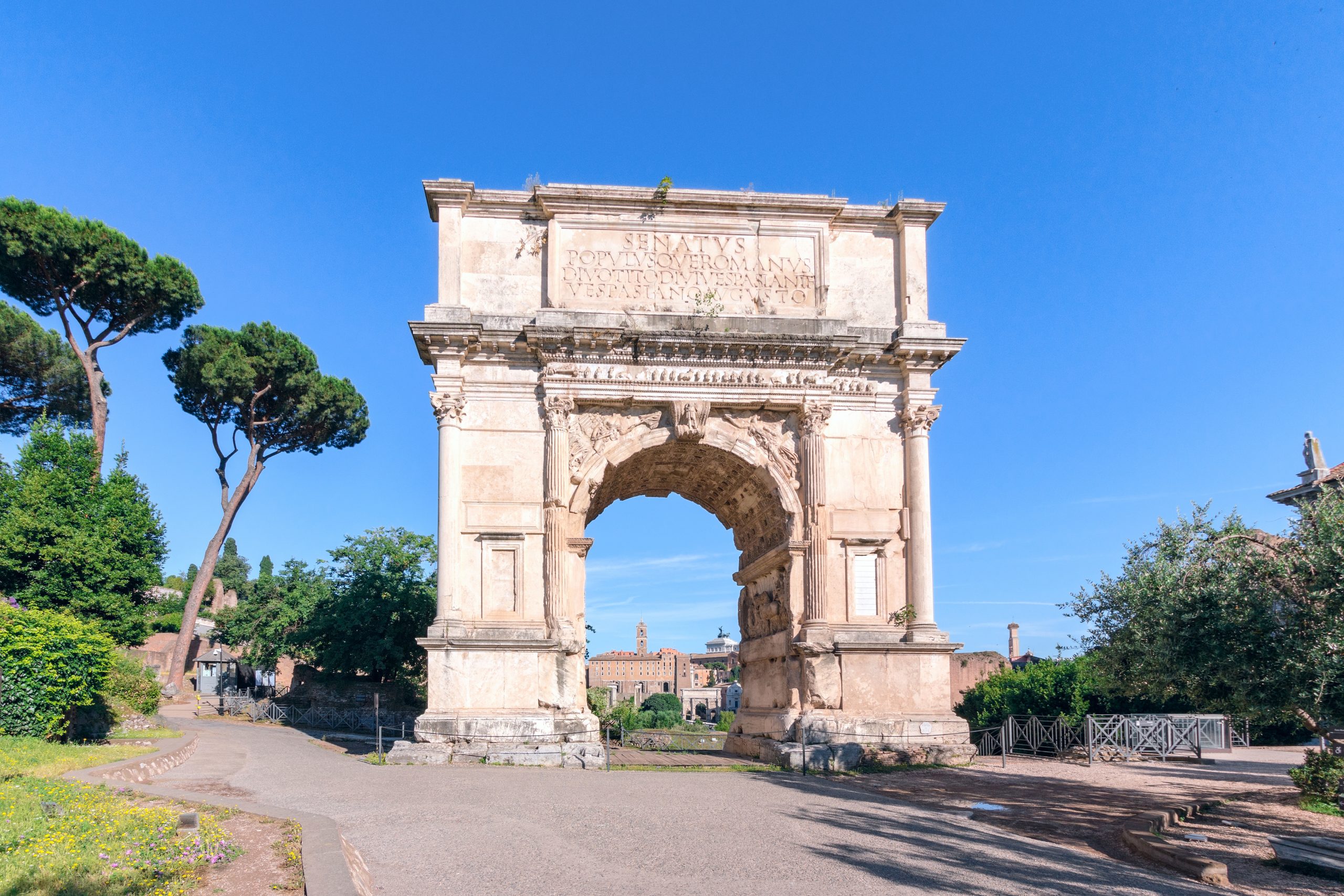
Located at the entrance to the Forum, this arch was built to commemorate the military victories of the emperor Titus, including the siege of Jerusalem in 70 CE. Titus ruled over a century after Julius Caesar. He was still the first to come to inherit power from his father.
The arch is adorned with sculptures depicting the triumphal procession and the spoils of war.
4. Temple of Romulus
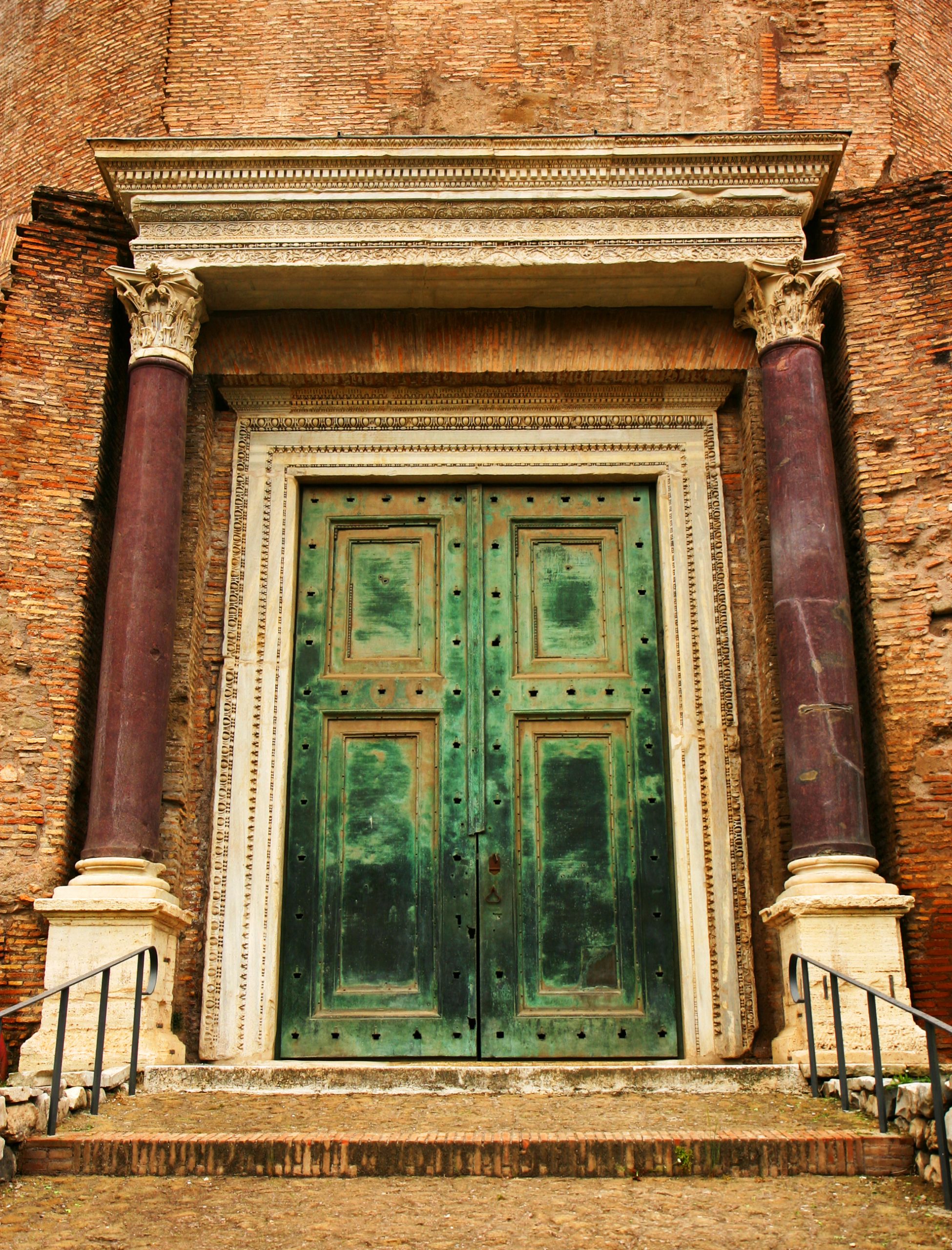
This temple is more intact than many buildings in the Roman Forum. For that, we can thank the fact that it was repurposed much later as part of a basilica for the saints Cosmas and Damian.
Tour-goers today enjoy seeing the massive bronze door pictured above. It’s no longer the color of burnished bronze, but its ancient look is all the more impressive. It’s centered between two stone columns and still has a working lock.
The building, known officially as the Temple of Divine Romulus, was dedicated to the son of Maxentius in 309 CE.
5. The Temple of Saturn
This is one of the oldest temples in the Forum and was dedicated to Saturn, the god of agriculture and wealth. The Saturnalia festival would be celebrated here in the early days of its use, but alas, all good things came to an end, and eventually instead of festivals, the building became an administrative government center.
Watch the video above from a local vlogger to learn even more about the temple, including how it was destroyed by fire and what the inscription at the top says.
6. The Basilica of Maxentius
This massive building was one of the largest in ancient Rome. It was used for public gatherings and trials.
Local tip: Love photography? Bring your long-range lens to capture the ornate details and the soaring vaulted ceilings.
7. The Curia Julia
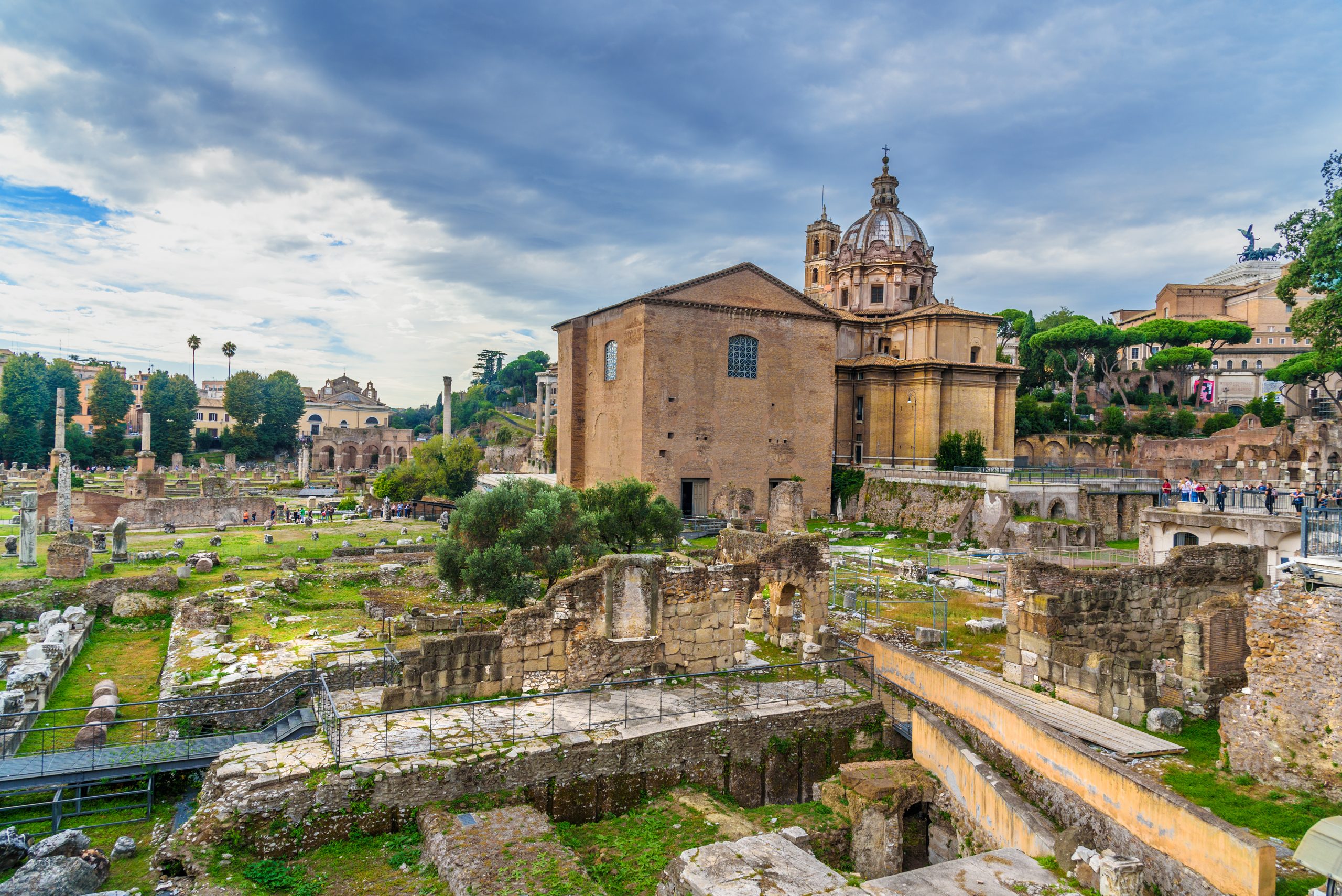
This was the meeting place of the Roman Senate. (Curia actually means “senate house.) The building was rebuilt several times over the centuries, so you won’t see the original curia. But this one is still well worth a look with its interesting blend of Roman and medieval elements.
8. The Temple of Vesta
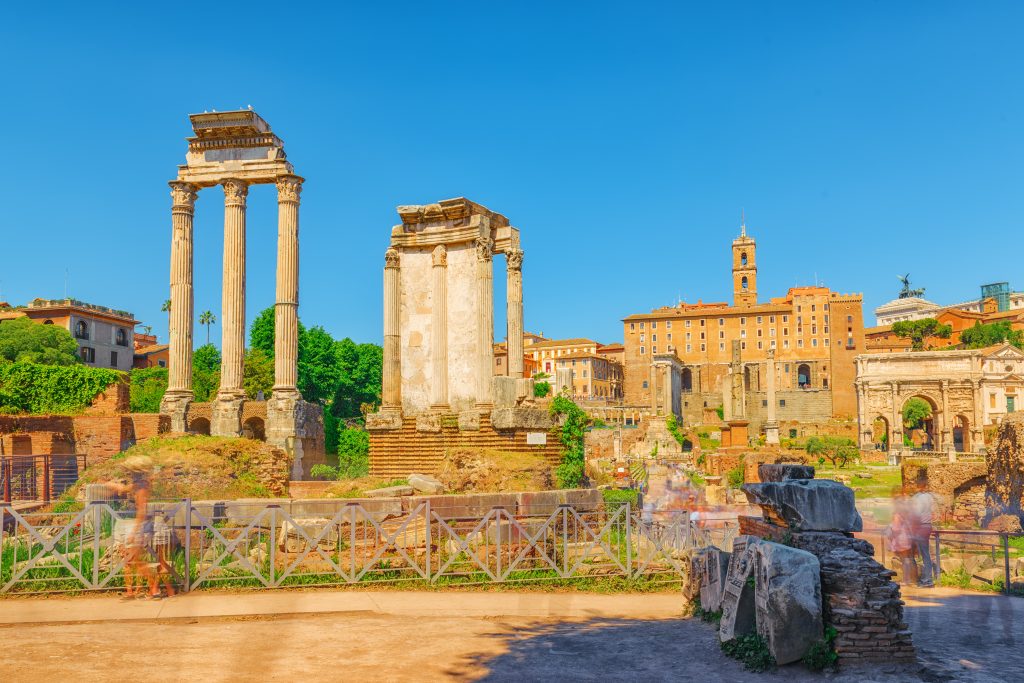
This temple dedicated to Vesta, the goddess of hearth and home was noted for its circular shape and ever-burning fire. Next to the temple was the home of the Vestal Virgins, where six virgin priestesses lived and tended to the ongoing flame. If the flame went out, the Vestal Virgins were required to rekindle it immediately using sacred rites. Failure to rekindle the flame would be seen as a serious breach of duty by the Vestal Virgins, who were highly respected in Roman society.
While the temple lasted until the Renaissance, it was unfortunately plundered in 1549 for its valuable marble. Only a few columns stand today from its ruins, a poignant site in the Roman Forum.
A guided tour of the Roman Forum
As you can tell from the list above, there’s a lot to see at this historic site, and I only covered a few of the main highlights. There’s a lot more to discover within the complex.
To get the most out of your visit, sign up for a tour. An expert tour guide will make sure you don’t miss a thing. They’ll not only provide fascinating historical context to this ancient site. As a local, they can also share insider insight on more to do in Rome, like where to head after your visit to the Forum or the best places to enjoy authentic Italian cuisine on a budget.
Our tour of the Roman Forum includes a visit to the Colosseum and Palatine Hill, two ancient Roman sites nearby. It begins with a guided tour of the Colosseum, the largest amphitheater in the world. Afterward, your guide will prepare you for a self-guided tour of both the Roman Forum and the Palatine, the most famous of Rome’s seven hills. Your tickets to all three attractions are included, and your guide takes care of the details so you make the most of your time with this express, skip-the-line experience.
FAQs and practical tips for visiting the Roman Forum
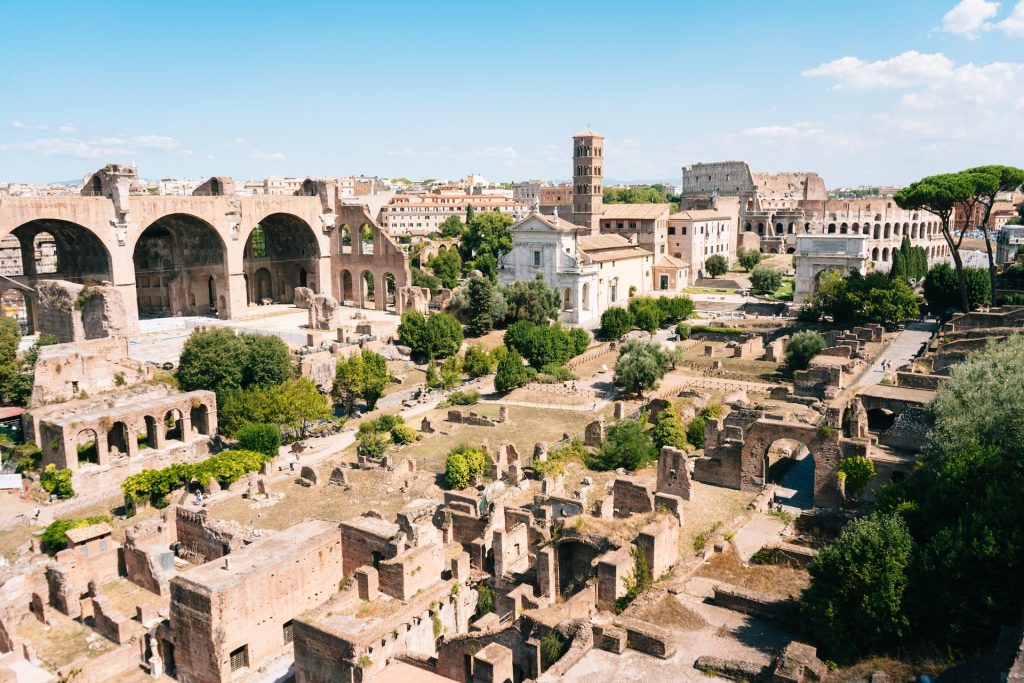
If you’re planning to see the Roman Forum, there are a few things to know before you go. To make it easy, I gathered some tips along with answers to the most frequently asked questions about visiting the Roman Forum. Hope this helps!
How do you get to the Roman Forum?
The Roman Forum has two entrances. The first one is at the Arch of Titus on Via Sacra near the Colosseum. This is the main entrance. The other is on Via del Tulliano. There is a gate close to the Colosseum, but this is just an exit.
To get to the Roman Forum by public transit, here are the main options.
- Metro: Take Line B (blue line). Exit Colosseo.
- Bus: Take any of the following buses: 51, 75, 85, and 87. Exit the Fori Imperiali/Campidoglio stop.
- Tram: Take tram line 3 and exit at Piazza del Colosseo.
Is the Roman Forum part of Palatine Hill?
The short answer here is no. The Roman Forum and Palatine Hill aren’t the same thing.
The Roman Forum and the Palatine Hill are located in the same archaeological area, but they are not the same historic site. The Forum was an area for ancient Roman public life. The Palatine Hill sits above the Forum and is best known for its imperial palaces.
How can I buy tickets for the Roman Forum?
You can’t just show up at the Roman Forum and buy your ticket. There’s actually no option to buy tickets at either entrance, so purchasing your tickets in advance and online is mandatory.
There’s a ticket that includes admission to the Roman Forum and both the Colosseum and Palatine Hill that’s valid for 24 hours once activated. If you go with a tour, all tickets are included. You can purchase tickets here.
When is the Roman Forum open?
The Roman Forum opens every day at 9 a.m. Closing depends on the time of year and can range from 4:30 in winter to 7:15 in summer. I recommend visiting in the afternoon to avoid the crowds that go first thing in the morning.
Can you walk the entire Roman Forum?
Yes, the site isn’t so large that you can’t cover it on foot. Go at a comfortable pace rather than rushing, and you’ll have a great time. There’s so much here to explore.
There are ramps and walkways to provide access around the ruins for those in wheelchairs or with strollers, but some parts are only accessible by foot.
Make sure you wear comfortable shoes and appropriate clothing — I recommend breathable fabrics and a hat and sunglasses to protect you from the sun. Roman summers can be very hot. Sunscreen is also a good idea since you’ll be out without much overhead cover.
Are there bathrooms or food in the Roman Forum complex?
Yes, there are bathrooms and water fountains inside the Forum. However, there aren’t any restaurants or cafes.
Which brings us to the next question — where can you eat near the Roman Forum? I’ve got some suggestions for you.
Where to eat near the Roman Forum

Since there are no food options in the Forum, and you are sure to be hungry after your visit, here are some dining suggestions in the area.
- Pizza della Madonna: Via della Madonna dei Monti, 110. Great for a quick lunch including fried rice balls (supplì) and pizza by the slice.
- Ristorante Apuleius: Via del Tempio di Diana, 15. A cozy, old-school dining experience with classic Roman dishes.
- Li Rioni: Via dei Santi Quattro, 24. Another pizza place, but this is a restaurant that has indoor and outdoor seating. Yummy and affordable pizza in the heart of Rome? Yes, please!
Caffetteria Italia al Vittoriano: This cafe is actually inside the Altare della Patria, and it’s on the pricey side, but that’s because of the amazing views of the Roman Forum (see the Instagram pic below). They serve drinks, coffee and snacks.
Things to do near the Roman Forum
You already know the Colosseum and the Palatine Hill are close by, but what other places might you want to visit? There are so many things to do in Rome, but here are some of the best that you can easily see on the same day as your visit to the Roman Forum.
Michelangelo’s Moses
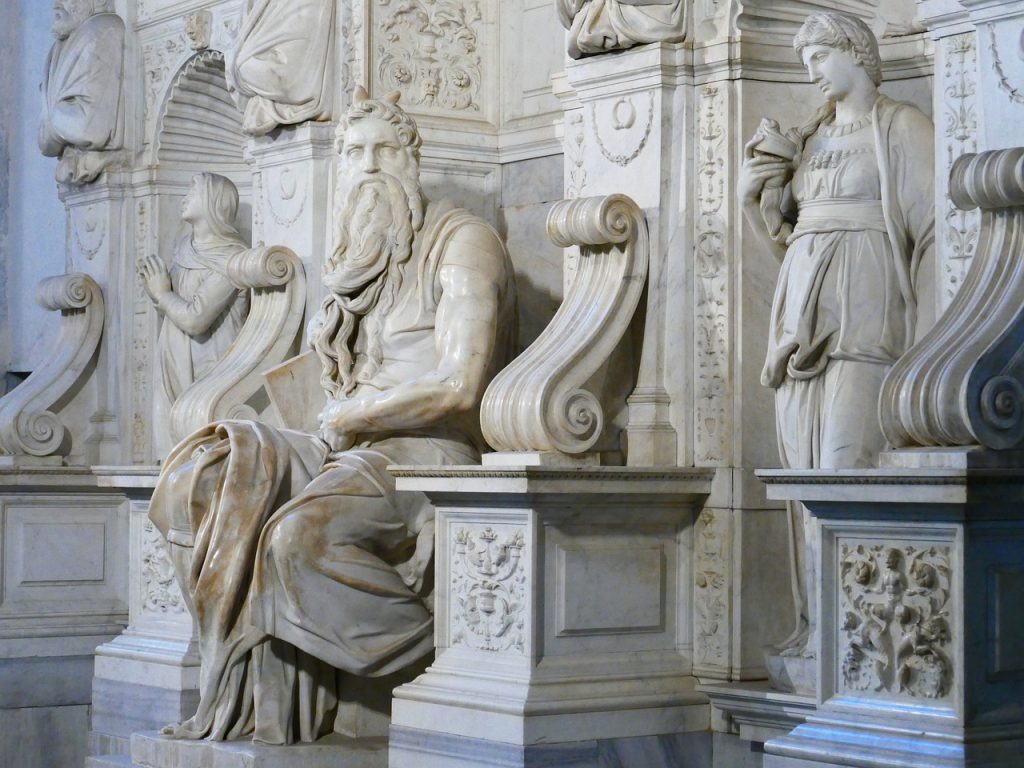
Just a seven-minute walk from the Forum, you can see this masterpiece. Unlike many other attractions in Rome, it requires no ticket, no reservation, and there is never a line.
It can be found in the church of San Pietro in Vincoli. Michelangelo was commissioned by Pope Julius II to design a tomb for him, and although the project was eventually abandoned, Michelangelo had already completed the central figure — a 7.5-foot-tall Moses seated on a throne. It’s a must-see.
Vittorio Emanuele II Monument
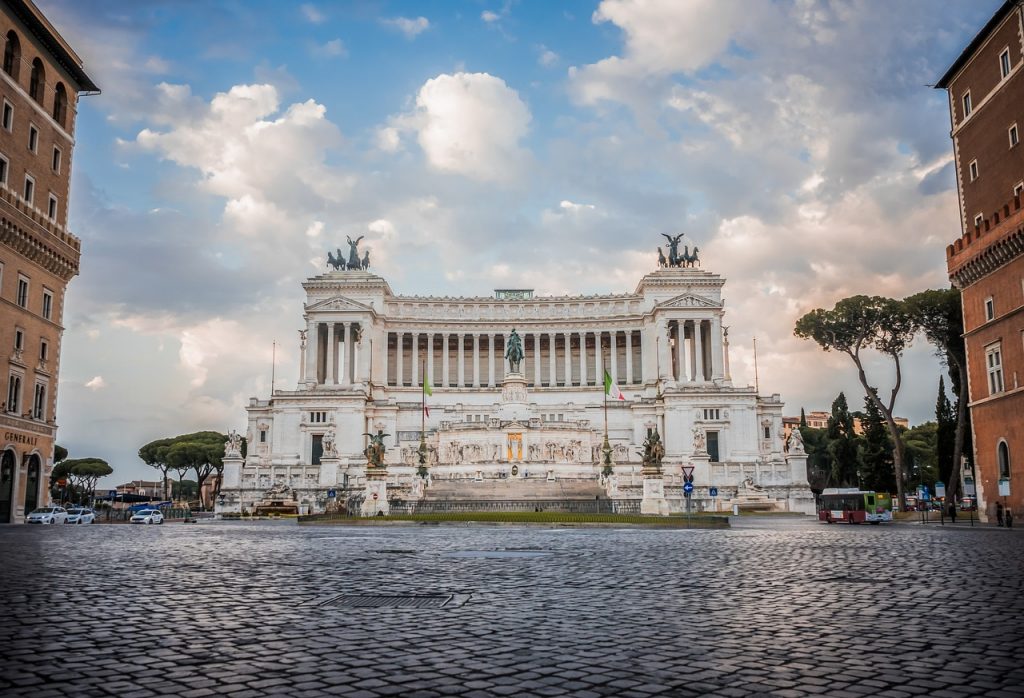
Also known as the Altare della Patria or the “Wedding Cake” due to its layered design and white marble exterior, this monument is impressive in size.
But it has been a source of controversy, with some locals criticizing it for that exact reason: the size and design being out of place in the historic center of Rome.
At any rate, visitors can go to the terrace to enjoy panoramic views of Rome.
Capitoline Hill
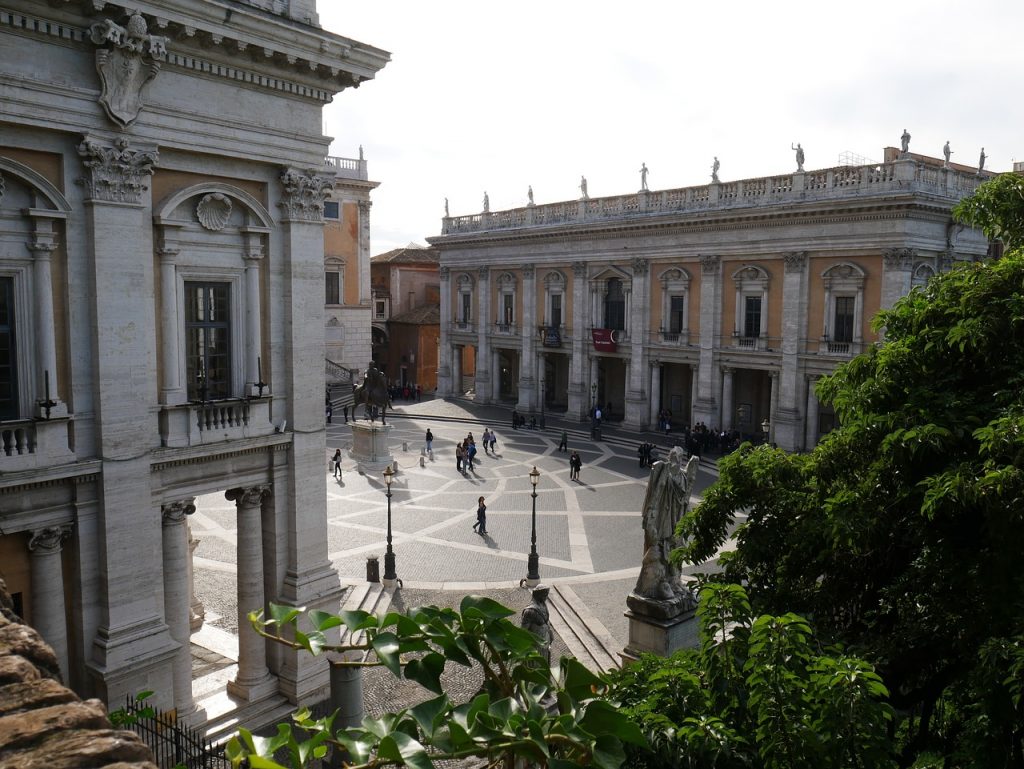
Like Palatine Hill, this is one of the seven hills of Rome. It has a rich collection of art, architecture, and ancient ruins.
Make sure to check out the Piazza del Campidoglio, the central square of Capitoline Hill, designed by Michelangelo. The square is surrounded by three palaces which now house museums and civic offices.
Visit the Roman Forum for a trip back in time
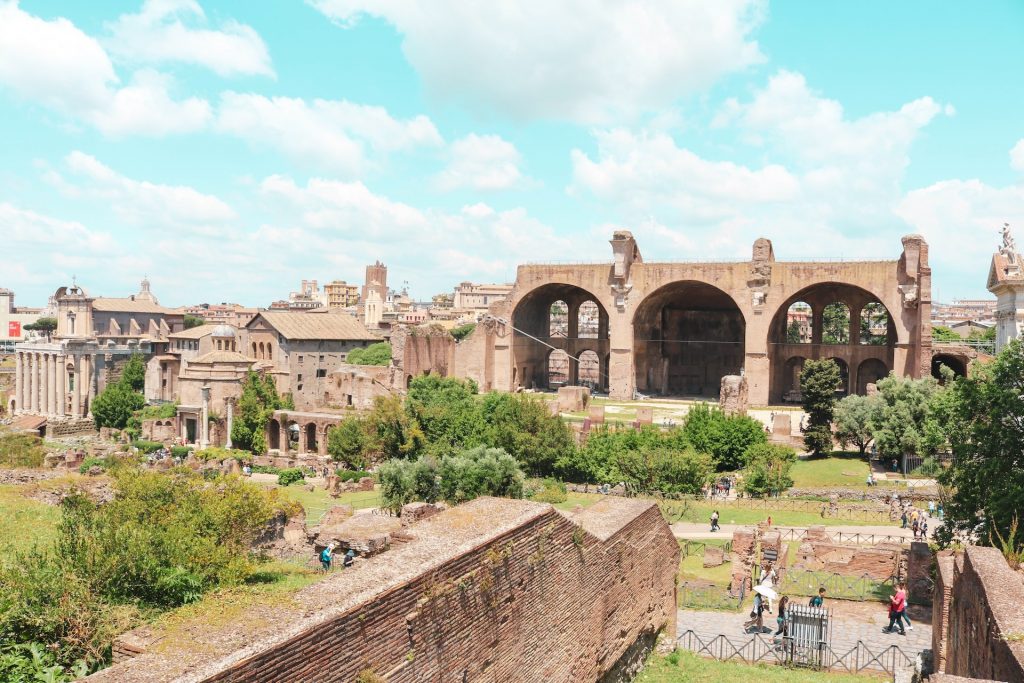
The Roman Forum is a journey through time that will leave you with a deep appreciation for the history and culture of ancient Rome. From the impressive arches and temples to the intricate details etched into the stones, every corner of the Forum offers a unique insight into the past.
Whether you’re a history buff or simply a lover of beauty and culture, a visit to the Forum is an experience that you will never forget.
Ready to go? Book your ticket and discover the timeless appeal of the Roman Forum.
